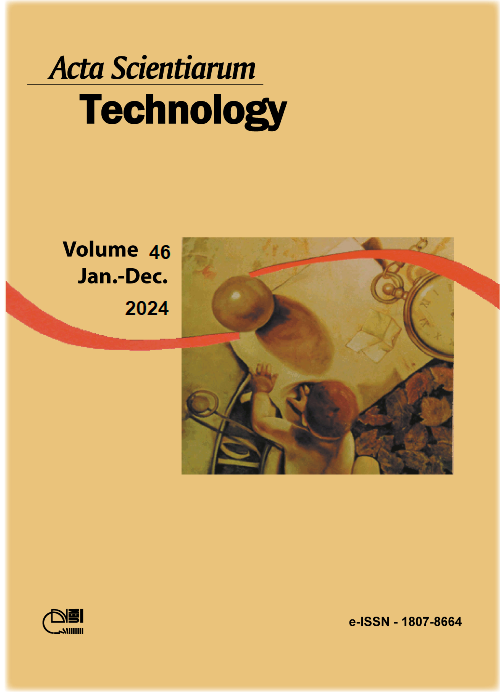Evaluation of different hydration techniques on the viability of commercial dry brewing yeast
Inglês
DOI:
https://doi.org/10.4025/actascitechnol.v46i1.69767Palavras-chave:
importance of rehydration; dry brewing yeast; vitality.Resumo
The utilization of dry yeast is increasingly becoming established in the brewing context, owing to the ease of storage and handling, the long shelf life and the convenience of dispensing a delicate and costly propagation process for fresh liquid cultures, which would need specialized labor and equipment. Dried yeasts undergo a procedure that removes nearly all liquid contents from the cell, and rehydration is then recommended prior to inoculation into the wort. Hydration is a nuanced procedure that allows yeasts to regain their vitality and viability, however, if carried out improperly, it can adversely affect fermentation. This study aimed to evaluate the impact of four hydration techniques on the viability and vitality of dry commercial yeast cells, preliminarily evaluating the influence of hydration using distilled and filtered water. Two different methodologies were employed, including the assessment of viability, by counting live and dead cells in the Neubauer chamber and the evaluation of vitality, by measuring the COâ‚‚ released after inoculation. The hydration techniques tested included hydration in water without stirring, hydration in water with stirring, and these two techniques replicated in dry malt extract (DME) wort with Specific Gravity (SG) 1040. Firstly, it was found that rehydrating the yeast in distilled water has a negative impact on cell viability. Also, the results indicated that initial agitation has a negative effect on yeast viability and vitality, while hydration in water without agitation produced the best results. Correct hydration of dry yeast is crucial for avoiding off-flavors due to accelerated or delayed fermentation.
Downloads
Downloads
Publicado
Como Citar
Edição
Seção
Licença
DECLARAÇíO DE ORIGINALIDADE E DIREITOS AUTORAIS
Declaro que o presente artigo é original, não tendo sido submetido í publicação em qualquer outro periódico nacional ou internacional, quer seja em parte ou em sua totalidade.
Os direitos autorais pertencem exclusivamente aos autores. Os direitos de licenciamento utilizados pelo periódico é a licença Creative Commons Attribution 4.0 (CC BY 4.0): são permitidos o compartilhamento (cópia e distribuição do material em qualqer meio ou formato) e adaptação (remix, transformação e criação de material a partir do conteúdo assim licenciado para quaisquer fins, inclusive comerciais.
Recomenda-se a leitura desse link para maiores informações sobre o tema: fornecimento de créditos e referências de forma correta, entre outros detalhes cruciais para uso adequado do material licenciado.



















